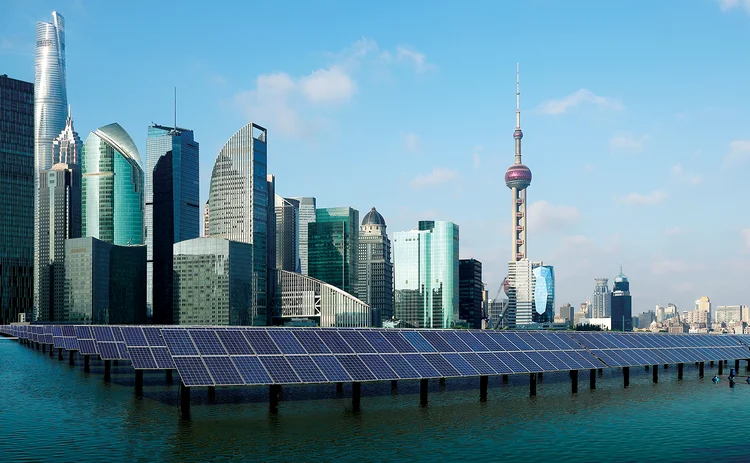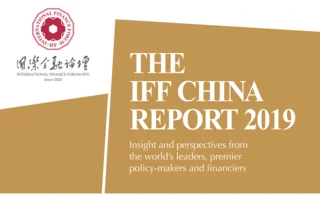
Carbon trading – Pricing out climate change


An excellent Chinese official public document, China renewable energy outlook 2018, released in October 2018, is guided by the strategic thinking of the 19th National Congress of the Communist Party of China and describes the implementation of the 13th Five-Year Plan development guidelines in detail. This document makes strong and simple observations and suggestions – perhaps most importantly that “human-induced climate change is one of the most severe challenges faced by humanity and poses a tremendous risk to the sustainable development of society”.
I could not agree more with this statement. Global warming caused by emissions will bring with it unusual political risk, including mass migration. Nothing less than life on earth itself is to be fought for.

The report also rightly stresses that “energy sector carbon dioxide (CO2) emissions represent the largest source of greenhouse gases, and the reduction of CO2 emissions in the energy system is therefore an integral part of building an ecological civilisation”.
It presents two scenarios for the future, considering China’s plans to completely overhaul its energy system by 2050: the “stated policies scenario”, which assumes full and vigorous implementation of current state policies for the energy sector, and the “below 2°C scenario”, which goes further in the reduction of CO2 emission.
The two scenarios have three common features. First, the success of energy transition will depend on the industry sector, although industry dominates national energy consumption in China. Second, over time, the share of fossil fuels will need to decrease – coal, in the first instance – and be replaced by the new, dominant renewable energies: mainly wind and solar. Third, we should not fear or be hesitant about the impact this energy transition will have on the speed of economic growth and employment, since development of renewable energy and the demands of new clean-energy users will boost economic activities and more than offset the negative effects of reduced fossil fuel use.
These observations are relevant in all countries, as the entire world must cope with energy transition. The report’s recommendations also have a universal dimension. First, keep coal reduction a key priority with strict control. Second, raise the deployment of renewable energy – namely wind and solar – to a new level in the next decade. And third, ensure a sufficiently high cost for CO2 emission, also in the short run, to “create a more level playing field between fossil fuel-based power and renewable energy. Further measures should be considered as short-term solutions, including a carbon tax and/or a floor price within the carbon market. In addition, carbon pricing and carbon markets must include other sectors beyond the power sector.”
Carbon pricing and climate change
This last recommendation leads me to focus on carbon pricing as a device to fight global warming. There follow two preliminary remarks on these observations, then an examination of why carbon pricing is superior to other measures in limiting emissions:
1. The right target must not be missed. It is not energy consumption, but consumption of energy at the origin of CO2 emission. Fighting climate change need not and must not lead to Malthusian economic policies, which will undermine standards of living and create mass unemployment. The global population will continue to increase, mainly in emerging markets where the needs of the population are huge. Curtailing the use of fossil fuel energy should not be confused with shrinking the demand for energy.
2. The policy favoured by governments globally is to reduce carbon emissions through administrative measures, interdictions, fiscal incentives and public spending. One should not criticise these approaches, which are certainly useful – for example, closing the most polluting coal-fired power plants, as in China; subsidising renewables, thanks to tariffs paid by consumers, as in Germany; or giving the subsidies to households to reduce their consumption of fossil fuel energy, as in France.
But, for all their positive effects, these approaches are costly and their benefits to global welfare remain limited. Thus the best approach is via a market mechanism; when we implement markets for carbon, we can assume the market covers all emitted carbon and can be sure it is the origin of pollution, whoever is affected.
For the market – and for carbon – to exist, emission permits that can be exchanged should be introduced. In this market, we can control the volume of emissions – allowing the price of carbon to adapt locally – or the price of carbon can be fixed, with the volume of emissions permitted becoming indigenous to demand.
Fixed versus controlled
Two market systems currently exist: in the UK, for example, authorities fix the price; in the European Union and China, the trading system targets the volume of carbon emitted. The latter option is the least efficient because, by controlling volumes, the price becomes volatile and a very efficient proportion of the carbon price signal is lost.
When the EU introduced an emissions trading system in the mid‑1990s, the price of carbon was €30 per tonne. Following the financial crisis it fell to €3 per tonne, where it remained for the best part of a decade. In 2013, the price of carbon increased to €25 per tonne, and is now decreasing again, to about €18 per tonne.
It must be emphasised that a significant, predictable and rising price of carbon is the best incentive for producers and consumers to shift their behaviour from highly carbon-intensive to low-carbon or even carbon-free products.
Common sense dictates that, with higher carbon prices, activities that generate high carbon emissions will cost more. There is a ‘substitution effect’ – to speak the language of the economist – towards sources of energy that emit less carbon. In the final analysis, getting rid of carbon – and therefore the problem of global warming – comes down to the level of the price of carbon.
There is a point at which carbon will simply be too costly for an economic activity to continue emitting it. A higher, predictable price of carbon is by far the most efficient device to fight climate change. In practice, a rise in the price of carbon raises the problem of feasibility, at least in the short to medium term, and the problem of competitiveness. If the price of carbon is raised too rapidly, some energy sources will become too costly, and lead to energy shortages and business closures.
These are reasons that predictable, incremental processes are proposed – for example, inflation plus a given year-on-year percentage increase would allow economic structures to adapt smoothly to the energy transition. The carbon price is, therefore, an incentive as well as a signal to follow the right path in the least painful manner.
A task force for change
But there is resistance. To overcome this, and to encourage the EU to adapt the carbon price-based system, a task force comprising high-level personnel has been launched in Europe.
China is considering the introduction of a similar device to complement and better equip the initiatives it has already launched, probably globally, and to contribute to settling the competitiveness risk argument. An initiative is also being instigated under the umbrella of the International Finance Forum, which is planning a joint meeting in Paris of Chinese and EU leaders to exchange ideas about carbon pricing.
By pushing forward with this initiative, both Europe and China are showing their willingness to face this major challenge for humanity together, with determination and efficiency.
Only users who have a paid subscription or are part of a corporate subscription are able to print or copy content.
To access these options, along with all other subscription benefits, please contact info@centralbanking.com or view our subscription options here: http://subscriptions.centralbanking.com/subscribe
You are currently unable to print this content. Please contact info@centralbanking.com to find out more.
You are currently unable to copy this content. Please contact info@centralbanking.com to find out more.
Copyright Infopro Digital Limited. All rights reserved.
As outlined in our terms and conditions, https://www.infopro-digital.com/terms-and-conditions/subscriptions/ (point 2.4), printing is limited to a single copy.
If you would like to purchase additional rights please email info@centralbanking.com
Copyright Infopro Digital Limited. All rights reserved.
You may share this content using our article tools. As outlined in our terms and conditions, https://www.infopro-digital.com/terms-and-conditions/subscriptions/ (clause 2.4), an Authorised User may only make one copy of the materials for their own personal use. You must also comply with the restrictions in clause 2.5.
If you would like to purchase additional rights please email info@centralbanking.com







